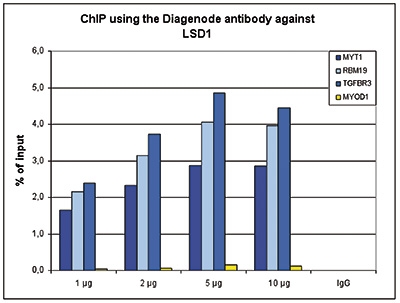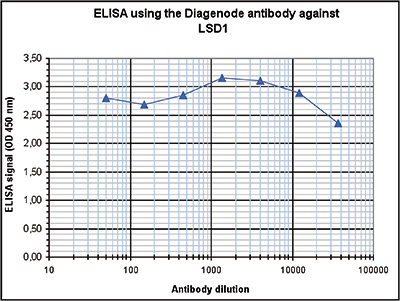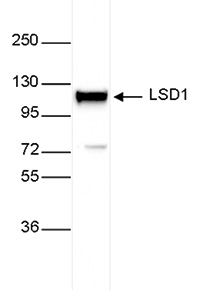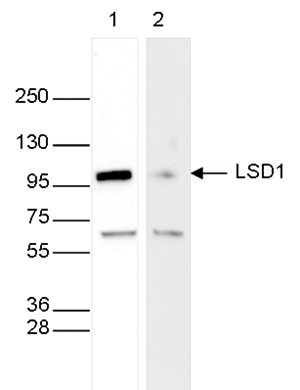LSD1 (lysine specific demethylase 1, UniProt/Swiss-Prot entry O60341) is a component of the histone demethylase complex that uses FAD as a prosthetic goup. LSD1 may have a dual effect on gene transcription. As it demethylates the mono- and dimethylated ‘Lys-4’ of histone H3, which are associated with transcriptional activation, LSD1 can act as a repressor of gene expression. However, LSD1 is also capable of demethylating ‘Lys-9’ of histone H3, a specific tag for epigenetic transcriptional repression, thereby leading to activation of androgen receptor target genes. LSD1 therefore mediates different processes such as embryonic development, cell differentiation and proliferation, stem and cancer cell biology
-
产品
剪切技术
Tagmentation
Chromatin studies
DNA methylation
- Bisulfite conversion
- Methylated DNA Immunoprecipitation
- Methylbinding domain protein
- Hydroxymethylated DNA Immunoprecipitation
Genome editing (CRISPR/Cas9)
Antibodies
- All antibodies
- Sample size antibodies
- ChIP-seq grade antibodies
- ChIP-grade antibodies
- Western Blot Antibodies
- DNA modifications
- RNA modifications
- CRISPR/Cas9 antibodies
- CUT&Tag Antibodies
NGS Library preparation
- Library preparation for ChIP-seq
- Library preparation for RNA sequencing
- Library preparation for DNA sequencing
Automation
Reagents
- 服务
- 研究领域
- 资源
- 公司
-
联系人











